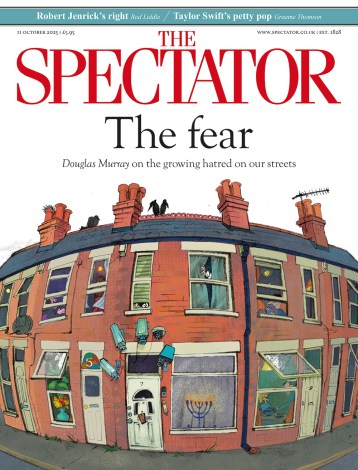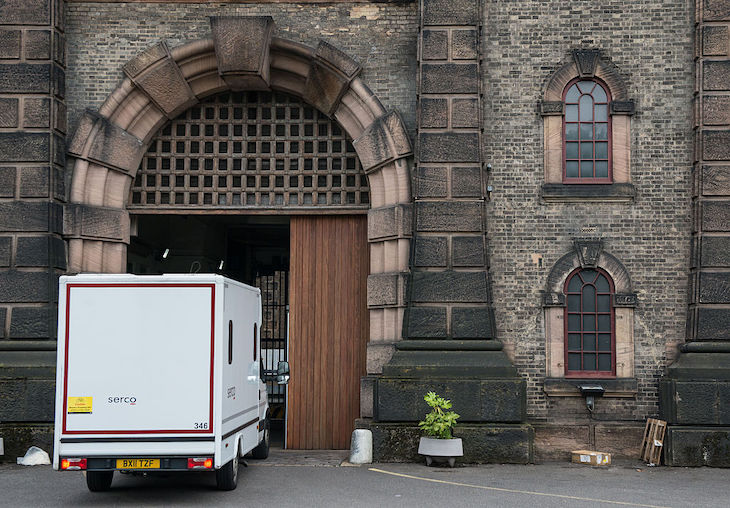There’s fevered speculation about inside jobs or state actors involved in the HMP Wandsworth prison break by terror suspect Daniel Khalife. But as police close in on Richmond park, whether he’s found cowering in a ditch or at a press conference in Tehran, this dramatic escape reveals just how close we are to a full blown crisis across our prison system.
Wandsworth has been failing in plain sight in front of helpless officials at the Ministry of Justice for years. Repeated inspections have revealed squalor, overcrowding and chronic staff retention problems with young, inexperienced officers out of their depth. Writing about another filthy jail recently, Chief Inspector Charlie Taylor, rapidly running out of superlatives for crisis, correctly said that dirty and uncared for jails were a proxy for far more serious problems. At Wandsworth, summed up by recent prison leaver Chris Atkins as ‘chaos run by schoolchildren’, all the ingredients for this week’s catastrophe were there already, without the James Bond flourishes.
It wasn’t always like this. When I ran security at Wandsworth in the mid-90s, we were clearly and confidently in charge. We had high morale and a fully staffed security department able to launch our own intelligence-led search operations. We scrupulously vetted all high-profile prisoner employment applications like kitchen staff who enjoyed status and better pay. The prison was firmly under our control. That meant that we could take risks in other ways that benefitted prisoners, such as allowing Pimlico Opera and hundreds of members of the public in to put on and enjoy a prisoner production of West Side Story. It also meant that front line officers felt safe enough to be out amongst prisoners supporting their rehabilitation and gathering crucial intelligence from prisoner sources and observation. This isn’t perfect hindsight, there were many problems too, including some overtly racist and oppressive staff. But in the main, everyone benefitted because we were the biggest gang in the prison, to put it bluntly. The vast majority of prisoners want to see legitimate authority in the men and women who wear the uniform. Where this isn’t the case, the wheels quickly fall off.
At HMP Wandsworth, all the ingredients for this week’s catastrophe were there already, without the James Bond flourishes
Wandsworth today seems to have little in common with the place we ran. In the years since the disastrous austerity programme, experience and numbers were stripped out of the service. This has led to free fall in all the important metrics of disorder, assaults and self-harm that mean the difference between jails as hopeful places, or where accidents and embarrassments are waiting to happen.
The series of human and physical security failures that would have to have taken place to allow Khalife to plan and orchestrate his escape, strapped to the bottom of a prison van, might surprise ministers but come as no shock to those of us who have been warning about declining standards and management ineptitude for years.
Prison security is a dynamic process because conditions are constantly evolving. They rely on motivated and alert people carrying out often humdrum tasks right every time. The basis of this is the process of risk assessment. The gatehouse where staff apparently failed to spot a prisoner hanging on to the undercarriage of the van and the kitchen where he was able to evade staff to do so will have had risk assessments that identify escape of prisoners as a primary hazard with high consequence. That would have mandated control measures and safe systems of work to reduce or eliminate the risk. But as Mike Tyson memorably said, no plan survives a punch in the face. So it’s not enough to have these plans if they can’t survive off the page or they are operated by people who are so demoralised or possibly even compromised that a terrorist suspect sails through the front gate.
No doubt one of Justice Secretary Alex Chalk’s independent investigations will be looking at these processes, along with the operation of Wandsworth’s contingency plans. I ran the command suite at HMP Wandsworth where major incidents were managed from. It was permanently staffed and ready for action at a moment’s notice to respond to a major incident. I do wonder what the current arrangements are and what gaps of almost an hour before police were alerted by the prison after Khalife was reported missing tells us about their fitness for the task.
Chalk has also asked for a review of Khalife’s categorisation process. It might surprise readers to know that we have convicted terrorists across all three categories of closed prison in this country. The system is supposed to allocate violent extremists in terms of their capacity and motivation to escape. This means the heavy end terror plotters are in Category A conditions and the enablers, logisticians and tin rattlers are in B or even C conditions. Seven years ago when I reported on extremism in prisons and found the whole system a self deluded mess, I raised concerns about the numbers of terror prisoners in conditions of lowered security where there was virtually no expertise or resource to manage the risk. I’m not in favour of a single terrorist prison but the current system is dangerous: we have ideologically motivated offenders in close proximity to violent and impulsive young men right across a prison estate that is falling apart. That should bother us all.
I was so concerned about the disconnect between the upper echelons of the prison service HQ and the facts on the ground that I recommended to ministers that they should have their own independent advisor on counter terrorism reporting directly to them to ensure they were not being fed partial baloney and they had eyes on the ground. The Times reported that the only reason prison bosses vetoed this appointment was because they thought it would be me. I can’t say whether I would have spotted the rot at Wandsworth but the Justice Secretary would do well to reflect on the need for forensic scrutiny of the well paid bureaucrats responsible for places like Wandsworth failing in plain sight. Other more dangerous and sophisticated terrorists will be watching. And making plans.







Comments